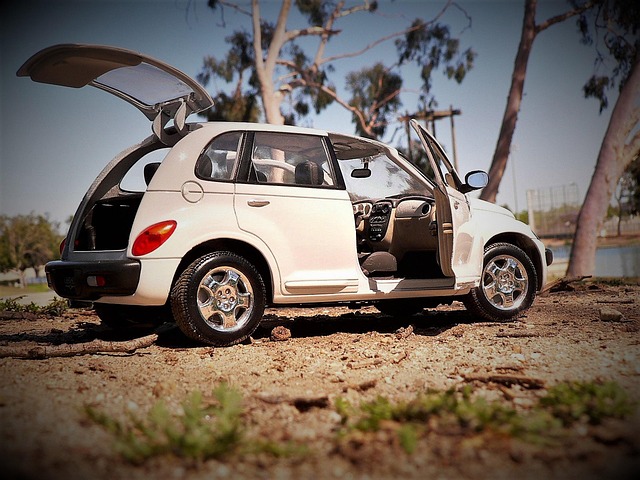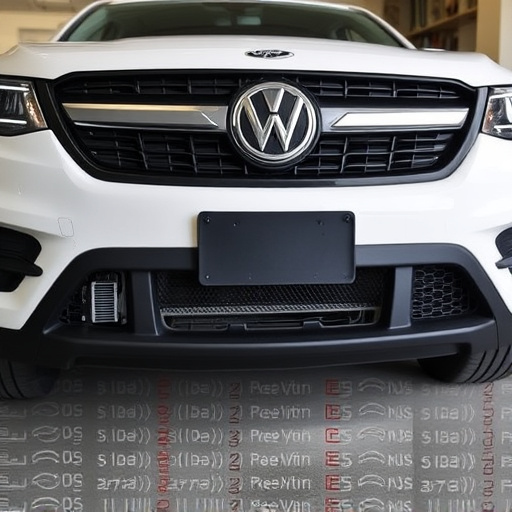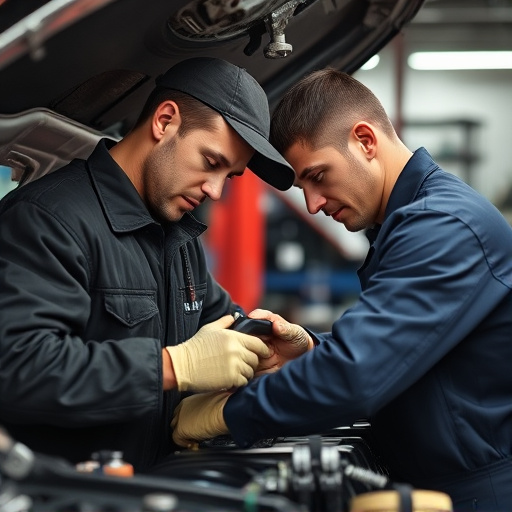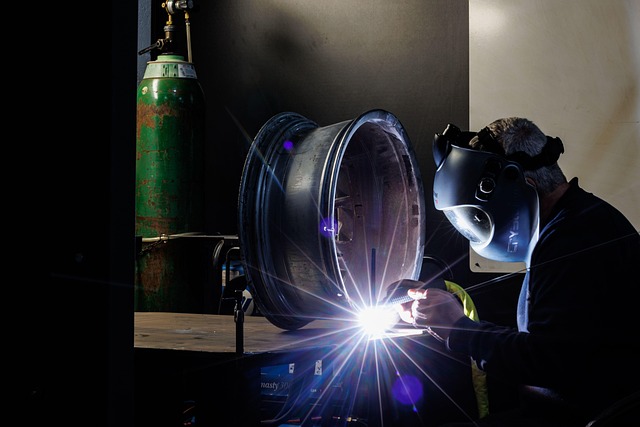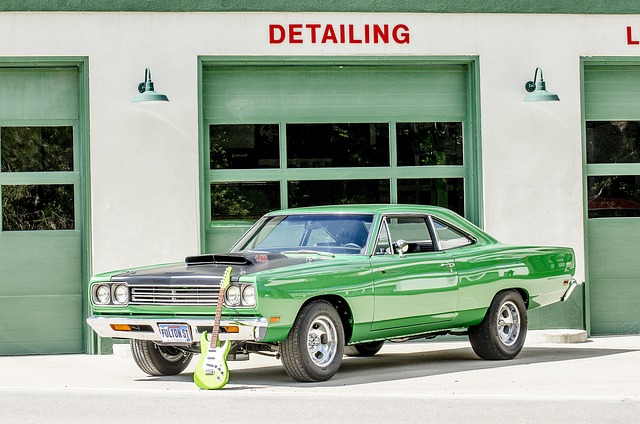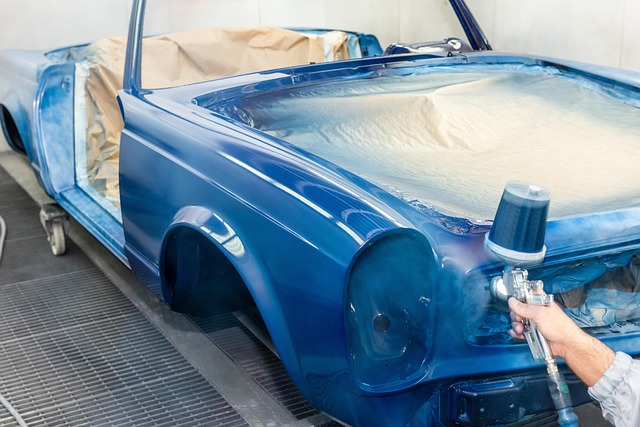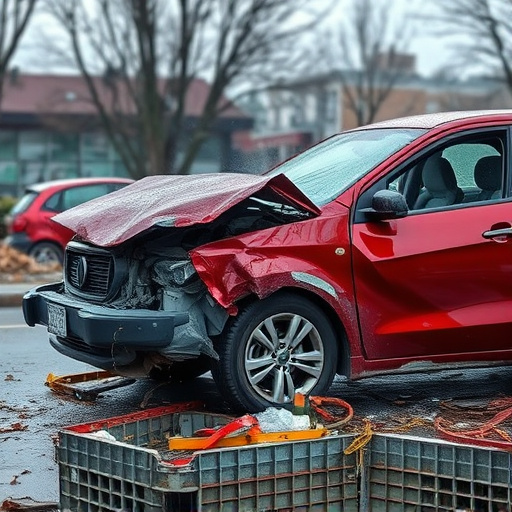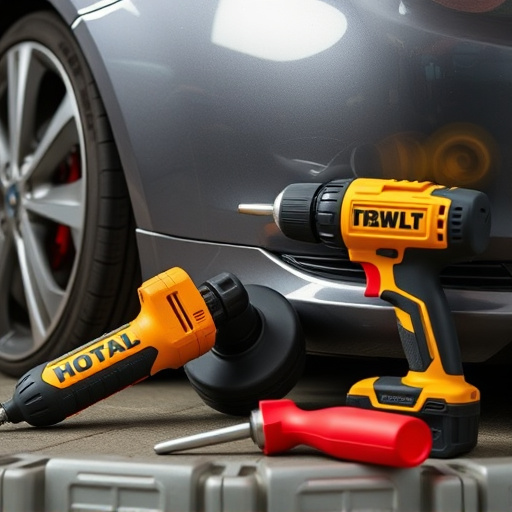By 2025, advanced technologies like AI-driven robotics, 3D printing, and smart materials will transform car repairs, significantly lowering out-of-pocket expenses. AI integration automates tasks, improves precision, reduces manual labor, and minimizes re-work costs. 3D printing revolutionizes bodywork repairs by offering custom-fit parts, streamlining production, and reducing waste. These innovations, combined with growing trends like electric vehicles and shared mobility, are set to reshape the cost dynamics of car ownership and repair.
“The landscape of out-of-pocket repair costs is poised for a significant transformation by 2025. Technological advancements, led by AI and robotics, promise to streamline repairs and reduce part costs through 3D printing. Consumer behavior shifts towards sustainability and DIY culture further drive down expenses, with online tutorials playing a pivotal role. Globally, regulatory trends push for durable and repairable devices, while innovative business models like product-as-a-service could drastically alter the financial burden on consumers. This article explores these developments and their collective impact on managing out-of-pocket repair costs.”
- Technological Advancements and Their Impact on Repair Costs
- – The role of AI and robotics in simplifying repairs
- – 3D printing and its potential to reduce part costs
Technological Advancements and Their Impact on Repair Costs

Technological advancements are set to significantly reshape the landscape of out-of-pocket repair costs by 2025. Innovations in materials science and manufacturing processes, such as advanced composites and 3D printing, will make vehicle parts lighter, stronger, and more cost-effective to replace. For instance, auto glass repair technologies have evolved to include laser-based repairs that can fix cracks and chips quickly, reducing labor costs and enhancing durability. Similarly, advancements in robotics and artificial intelligence will streamline vehicle body repair processes, minimizing human error and increasing efficiency, ultimately lowering repair bills for consumers.
Moreover, the integration of smart materials and connectivity features into modern vehicles promises to extend their lifespans and reduce the need for frequent repairs. As cars become more self-diagnosing and predictive in terms of maintenance requirements, out-of-pocket expenses for preventive care could decrease significantly. This shift towards proactive maintenance is expected to be a game-changer, especially when combined with emerging trends like electric vehicle adoption and shared mobility services, which will further influence the cost dynamics of car ownership and repair in 2025 and beyond.
– The role of AI and robotics in simplifying repairs
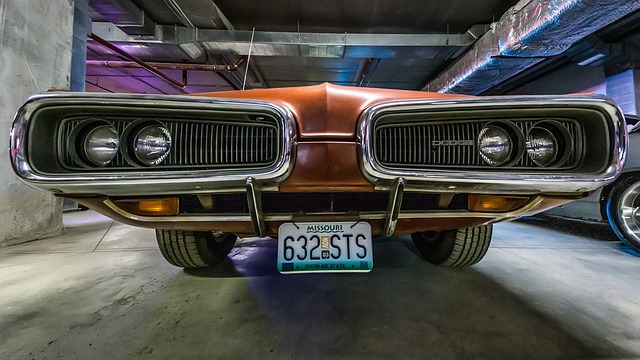
The integration of artificial intelligence (AI) and robotics is set to transform the landscape of out-of-pocket repair costs by 2025, making auto body painting, vehicle dent repair, and even intricate auto body restoration processes more efficient and cost-effective. AI-powered robots can perform complex tasks with remarkable precision, reducing manual labor expenses and the time required for repairs. For instance, robotic systems equipped with computer vision can accurately detect and measure damage, enabling technicians to work faster and more efficiently.
Furthermore, robotics enhances safety by handling hazardous or physically demanding tasks, thus reducing workers’ compensation claims. As AI algorithms learn from vast datasets, they can anticipate potential issues, improving repair quality and minimizing the need for costly re-work. This advanced technology promises to lower out-of-pocket expenses for consumers while increasing the accessibility of high-quality repair services.
– 3D printing and its potential to reduce part costs

The year 2025 is poised to usher in a new era for out-of-pocket repair costs, with 3D printing emerging as a game-changer in the automotive industry. This innovative technology has the potential to significantly reduce part costs associated with car bodywork repairs, making traditional auto body shop visits more economical. By enabling on-demand manufacturing of precise, custom-fit components, 3D printing can streamline the production process and cut down expenses for both consumers and car body shops alike.
In the realm of automotive repair, 3D printing offers a sustainable and efficient solution to the growing demand for affordable repairs. Unlike traditional methods that may involve costly mold creation or long lead times for specialized parts, 3D printing allows for rapid prototyping and customization. This not only reduces waste but also ensures that car body shops can provide high-quality repairs at competitive prices, ultimately benefiting folks looking to keep their vehicles in top shape without breaking the bank.
By 2025, technological advancements promise to significantly reshape the landscape of out-of-pocket repair costs. AI and robotics will play a pivotal role in streamlining repair processes, making them more efficient and cost-effective. Additionally, 3D printing technology is expected to revolutionize by reducing the cost of parts, ultimately lowering overall repair expenses. These innovations have the potential to make repairs more accessible and affordable for consumers, bringing about a positive shift in the way we manage our devices and appliances.
